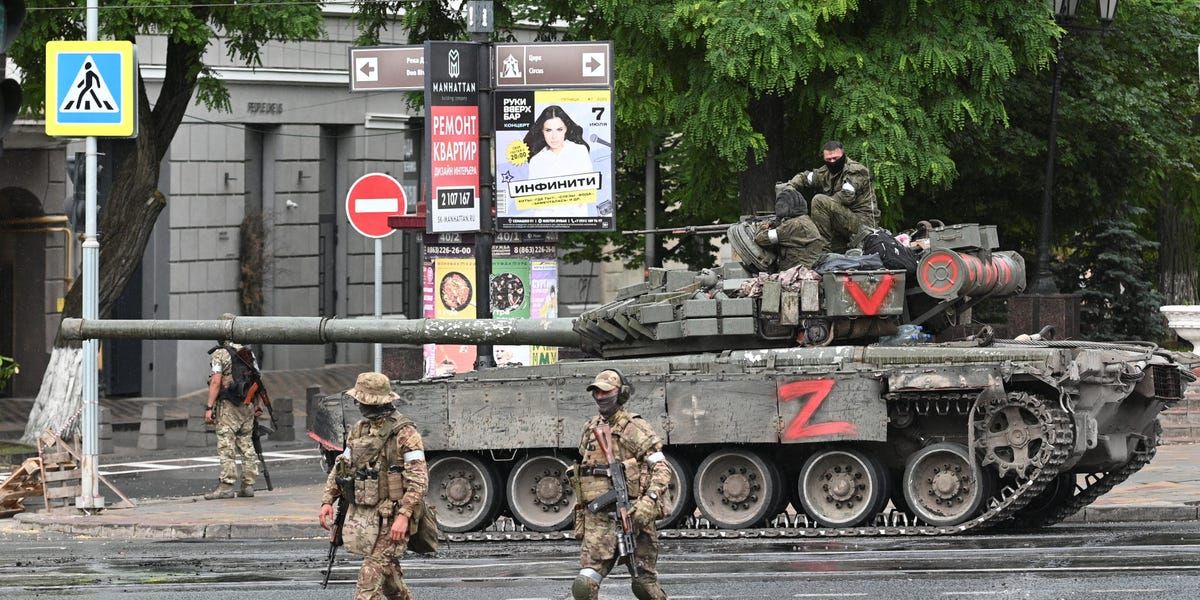Ruble Drops As Kremlin Says Russian FX Demand Surged During Wagner Mutiny
The ruble fell as much as 3% against the dollar intraday Monday, hitting its lowest level in 15 months.
The dip followed the Wagner Group's march on Moscow this weekend.
It caused Russian demand for foreign currencies to jump to 70%-80% in some regions.
Sign up for our newsletter to get the inside scoop on what traders are talking about — delivered daily to your inbox. Loading Something is loading. Thanks for signing up! Access your favorite topics in a personalized feed while you're on the go. download the app Email address By clicking ‘Sign up’, you agree to receive marketing emails from Insider as well as other partner offers and accept our Terms of Service and Privacy Policy
The Russian ruble tumbled as much as 3% against the dollar on Monday after the Wagner Group's advance on Moscow prompted Russians to scoop up alternative foreign currencies.
The ruble fell as low as 87 to the dollar intraday, the lowest in 15 months, then later pared the loss to about 1%.
The volatility followed an unexpected weekend uprising in Russia. On Saturday, the founder of the Wagner mercenary group, Yevgeny Prigozhin, ordered his forces to march on the country's capital, after he claimed the Russian military bombed his men in Ukraine.
Wagner captured the southern city of Rostov-on-Don and came within hours of Moscow. But later in the day, the warlord announced his forces would turn around, in order to avoid further bloodshed.
Over the weekend, 15 regions saw a significant increase in demand for foreign currencies, First Deputy Prime Minister Andrei Belousov said, according to Reuters.
"On average, it was about 30%, but most active growth in demand for cash was recorded in southern regions — in Voronezh, Rostov, and Lipetsk, as well as in large cities," he said. "Demand there increased by about 70-80%."
During the mutiny, Russian banks cut their ruble exchange rates to over 100 per dollar, though they have since eased prices.
And according to The Wall Street Journal, the ruble was also exchanged for tether, a dollar-pegged cryptocurrency, causing trades to rise by almost $15 million on Saturday. That's compared to Friday's $4 million, the outlet said, citing CCData.
While the crisis has de-escalated, President Vladimir Putin has yet to appear publicly amid growing doubts about his regime's ability to face down a similar revolt in the future.
For his part, Prigozhin said Monday that he had no ambitions of overthrowing the Russian government.
"Our decision to turn around came from two important factors," he said in a voice recording. "The first was that we did not want to spill Russian blood. The second, we were marching to demonstrate our protest, not to unseat the government."
Source: Markets Insider


